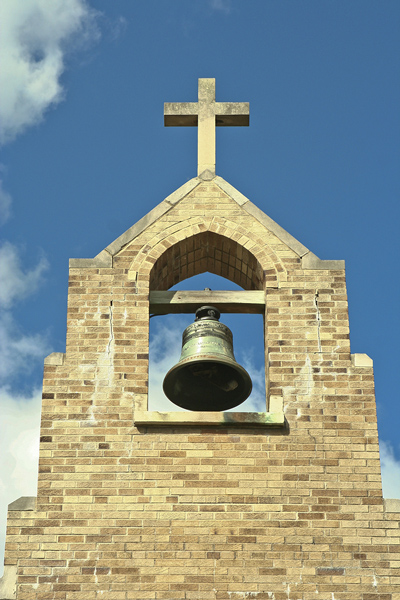
One feature church buildings of many Christian denominations have in common is some system of ringing chimes. From full towers to systems of electronic imitation, the sound of bells seems to be something that diverse traditions have preserved.
One of the first mentions of using bells in the Christian milieu comes from St. Gregory of Tours. He describes how bells would awaken monks for common prayer. Like building pyramids, from Egypt to China bell ringing was common amongst the human family.
Surprisingly, there are no “Ancient Astronaut Theorists” claiming that aliens must have come to earth to teach us how to make and use bells as they claim for the commonality of pyramids in diverse cultures.
In the Scriptures bells are first mentioned in the Book of Exodus. They are a prominent feature of Aaron’s priestly vestments worn when he would approach the Arc of the Covenant. Ancient cultures believed that rung bells offered protection from malevolent spirits. Some tribal cultures still believe that bells have an “apotropaic” quality whereby the elevating tone is unattractive to evil.
For Christians, the custom of ringing bells in a village to mark the hours of the day was vital.
Gradually the custom of ringing bells to mark special occasions grew. The monastic Rule of St. Benedict describes the ringing of bells to call the monks to the deathbed of a confrere about to expire.
In later Catholic cultures, as Mass was being celebrated, the tower bells of the church would be rung at the “Holy-Holy-Holy,” the calling down of the Holy Spirit, and the Consecration of the Host and Chalice to signal to those unable to attend Mass — the sick, day-laborers, the imprisoned — that something miraculous was occurring.
This custom gradually came inside the building as well. It was not until the Council of Trent that bell ringing at Mass was prescribed and the Liturgical reforms of the 20th century did not ban bell use in the Mass. Even today there are options for using hand-held bells during the Mass.
By the time of Vatican II, many thought that the use of bells was merely utilitarian in that the sound signaled to a people unable to understand the Latin language and unable to hear the silent prayer over the bread and wine that the Lord had come into their midst. When Vatican II stressed the importance of the Eucharistic Prayer and permitted its audible recitation, some believed bells were superfluous.
Still, there is something captivating about angelic sound. In an age when we are so distracted that we forget that our mobile phone ringtones could sound at any moment, perhaps the sounds of heavenly chimes at Mass can help us rejoice more deeply at the fact that Christ is present in bread and wine on the altar to nourish us.
Humans are easily distracted, but most who are able notice bells when they hear them. As Jesus says, “all who have ears ought to hear.” We only have to hear the correct thing.

